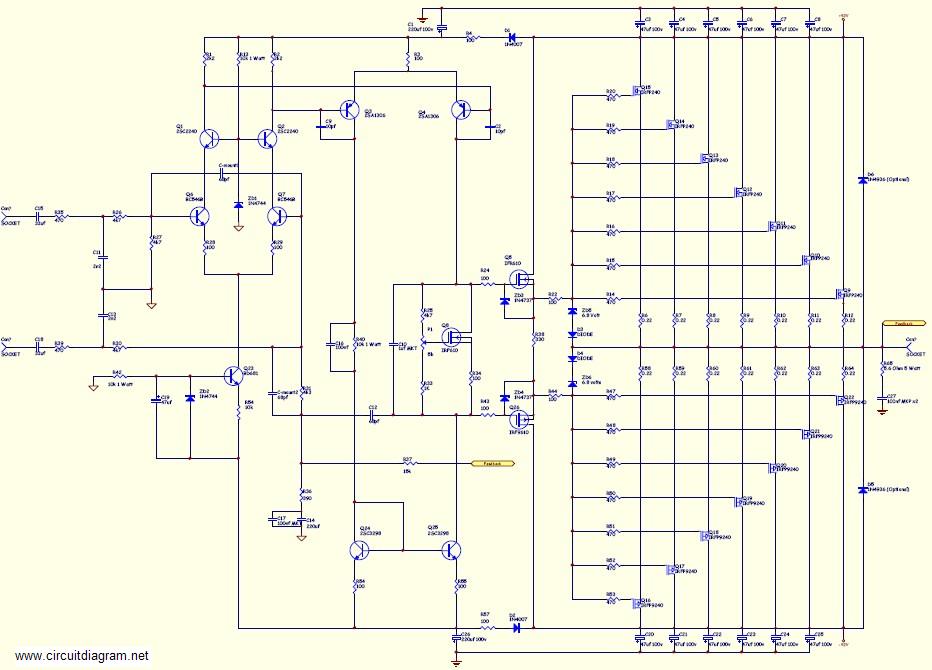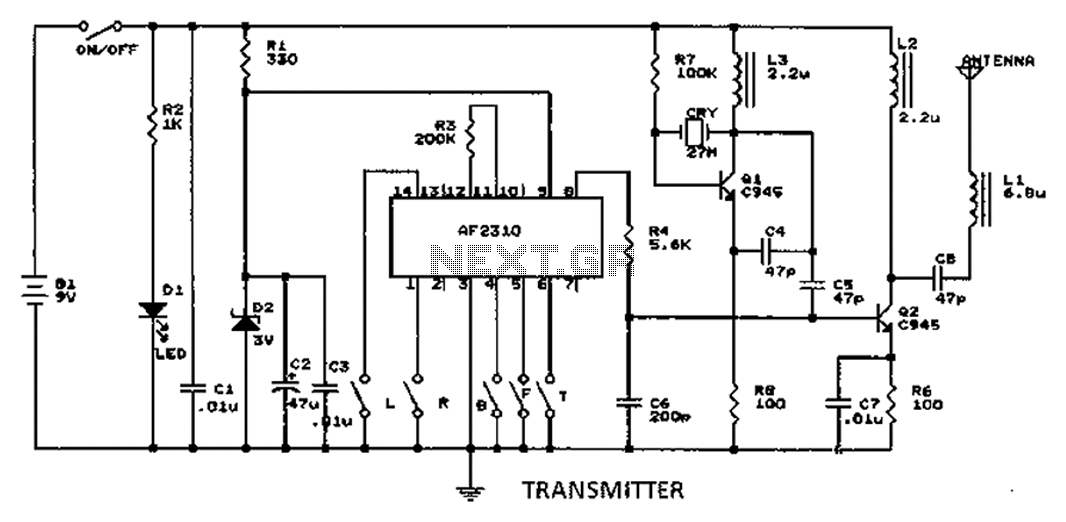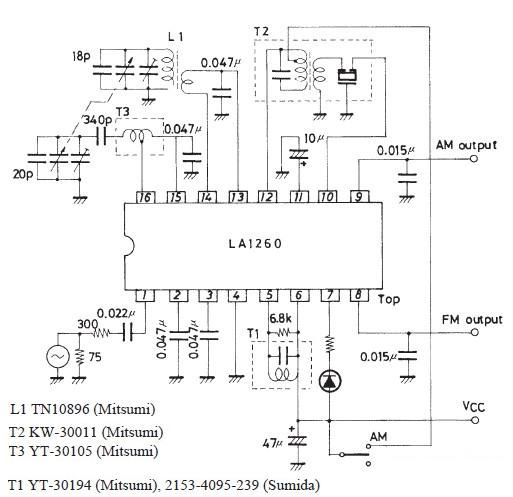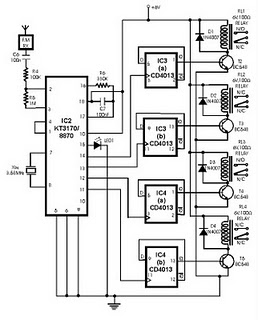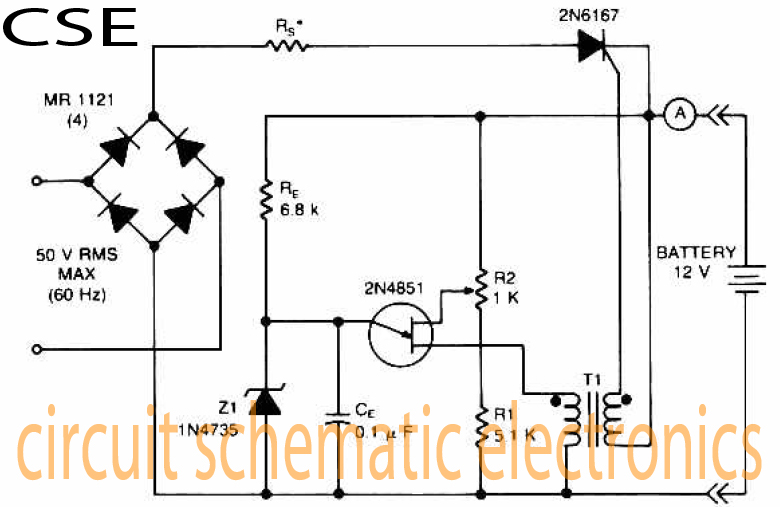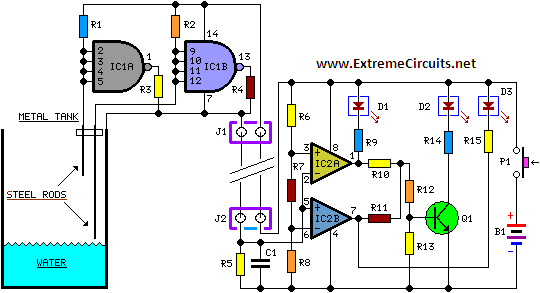
TR-55 Radio Sony schematic
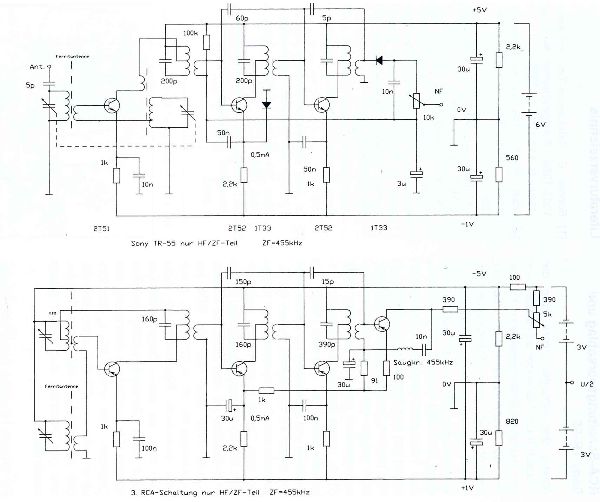
The TR-55 was the first transistor radio manufactured and sold in Japan. It utilizes the following transistors: 2T51 (oscillator-mixer), two 2T52 (for intermediate frequency), 2T53 (audio frequency driver), and 2T12. The first commercially available transistor radio was the Regency TR-1, released in October 1954, followed by the Raytheon 8TP in the spring of 1955. General Electric also produced a pocket transistor radio in 1955, with models ranging from 675 to 678, depending on the color. Additionally, the first SONY radio imported to the USA was the TR-63 in 1957.
The TR-55 transistor radio represents a significant milestone in the evolution of portable audio technology. This device employs a series of transistors that perform distinct functions critical to radio operation. The 2T51 transistor serves as the oscillator-mixer, generating the necessary radio frequency signals and mixing them with incoming signals to produce intermediate frequencies. The two 2T52 transistors are designated for intermediate frequency amplification, ensuring that the received signals are sufficiently amplified for further processing. The 2T53 functions as the audio frequency driver, converting the amplified signals into audio signals that can be output through a speaker. Finally, the 2T12 transistor is utilized in the power amplification stage, providing the necessary power to drive the speaker.
The design of the TR-55 laid the groundwork for future developments in transistor radios, showcasing the potential of solid-state components in consumer electronics. Its introduction marked a shift from vacuum tube technology to transistors, allowing for smaller, lighter, and more energy-efficient devices. The success of the TR-55 and subsequent models, such as the Regency TR-1 and Raytheon 8TP, demonstrated the growing consumer demand for portable radios, which would eventually lead to widespread adoption and innovation in the field of personal audio devices. The historical context surrounding the TR-55 also highlights the competitive landscape of the mid-20th century electronics market, with companies like General Electric and SONY contributing to the advancement of portable audio technology.TR-55 was the first transistor radio produced and sold in Japan. It uses the following transistors: 2T51 (oscillator-mixer), 2 x 2T52 (for IF), 2T53 (AF driver) and 2T12. The very first commercially produced transistor radio was Regency TR-1 from October 1954 followed by Raytheon 8TP in spring 1955.
GE has also built a pocket transistor radio in 1955 as models 675 to 678 depending color. The first SONY imported to the USA was TR-63 in 1957. 🔗 External reference
The TR-55 transistor radio represents a significant milestone in the evolution of portable audio technology. This device employs a series of transistors that perform distinct functions critical to radio operation. The 2T51 transistor serves as the oscillator-mixer, generating the necessary radio frequency signals and mixing them with incoming signals to produce intermediate frequencies. The two 2T52 transistors are designated for intermediate frequency amplification, ensuring that the received signals are sufficiently amplified for further processing. The 2T53 functions as the audio frequency driver, converting the amplified signals into audio signals that can be output through a speaker. Finally, the 2T12 transistor is utilized in the power amplification stage, providing the necessary power to drive the speaker.
The design of the TR-55 laid the groundwork for future developments in transistor radios, showcasing the potential of solid-state components in consumer electronics. Its introduction marked a shift from vacuum tube technology to transistors, allowing for smaller, lighter, and more energy-efficient devices. The success of the TR-55 and subsequent models, such as the Regency TR-1 and Raytheon 8TP, demonstrated the growing consumer demand for portable radios, which would eventually lead to widespread adoption and innovation in the field of personal audio devices. The historical context surrounding the TR-55 also highlights the competitive landscape of the mid-20th century electronics market, with companies like General Electric and SONY contributing to the advancement of portable audio technology.TR-55 was the first transistor radio produced and sold in Japan. It uses the following transistors: 2T51 (oscillator-mixer), 2 x 2T52 (for IF), 2T53 (AF driver) and 2T12. The very first commercially produced transistor radio was Regency TR-1 from October 1954 followed by Raytheon 8TP in spring 1955.
GE has also built a pocket transistor radio in 1955 as models 675 to 678 depending color. The first SONY imported to the USA was TR-63 in 1957. 🔗 External reference
